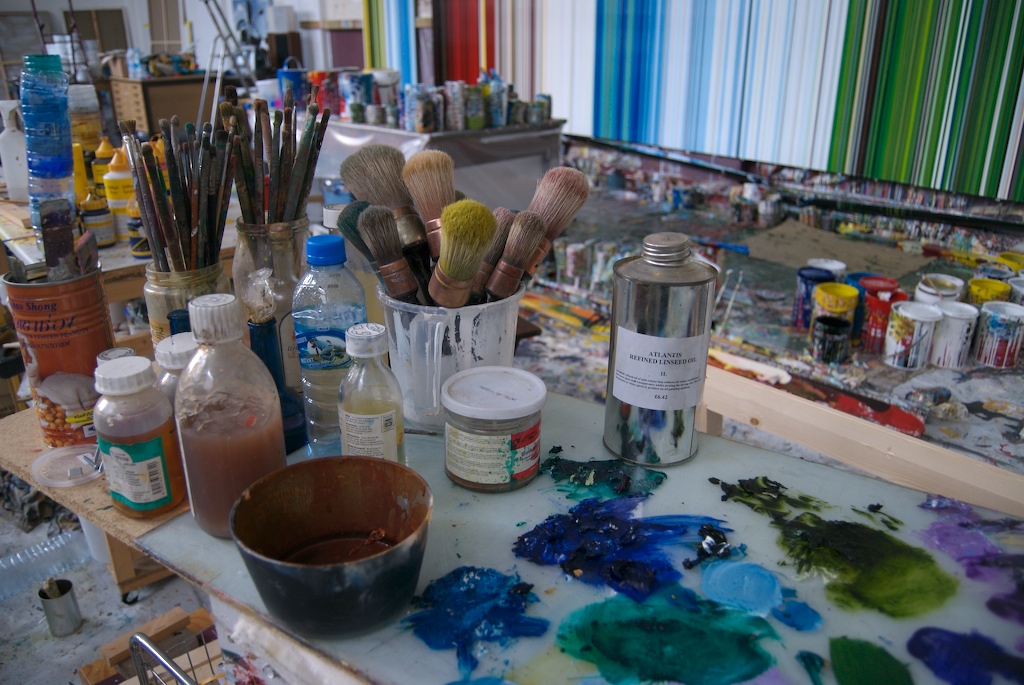Flicking between the genteel business of contemporary art and algorithmically fragmented children’s TV
Some years ago, I was in the midst of a group tutorial at a London art school. We were looking at a student’s work: a neat row of colourful, gestural, uninspiring abstract paintings. The artist’s first question to me – the main thing he was interested in, it turned out – was about which canvas I thought would sell first. There was no real build-up, nothing about what he’d done or why; he just cut straight to the mercantile chase. Equally alarmingly, the other students seemed to think that was a fair opening gambit.
After that, I decided to do a lot less visiting-lecturer work. Instead, since much of the usefulness of teaching for me, beyond the money, was getting a sense of where artistic practice was going next, I did more studio visits. The pandemic, inevitably, got in the way of that Plan B. But now, slowly, I’ve been able to skulk back to artists’ studios again, and – since we were inveigled into switching the artworld off and on again – it feels a little different. A trance has been broken.

In the quiet of a workspace, the reshaped and half-shattered world outside rings in the background like tinnitus. The back-and-forth about the often genteel and insular business of contemporary art, about stylistic innovations within pre-existing formats – which is most art now, it seems, and a corollary to being ‘understood’ within a teeming marketplace – continues to interest me greatly. But it can also feel like making familial small talk in the waiting room of a hospital.
This is a feeling-tone in itself, but you can’t credit it to anyone or anything, or really address it. Amid all that, and perhaps not surprisingly, what I’ve lately latched onto in people’s art – and what can be talked about right now – are small pockets of chaos lightly bound by control, some degree of which seems necessary to art making. A painter, say, presenting a mostly figurative work, will frame representation against areas of wilfully meandering paint, rife with accidents and grace notes, which act as a kind of emotional commentary on what’s depicted while, reciprocally, the recognisable elements give the looseness a reason to exist.
Such moments of cultural production that keep a tenuous grip on disarray make instinctive topical sense: a kind of untagged space, they seem to speak honestly, if slantwise, to where we are. At the same time, such experiences have to be zoomed in on, excluding other aspects; and turmoil redeemed through aesthetic ministrations also only lastingly functions if you don’t then connect it back to the artworld, which I’ve probably castigated enough (for a while) in previous columns. So you experience it in glimpses, bursts. Which is maybe why, when not drinking artists’ coffee, I’ve been spending some time with a form of chaotic cultural production that’s almost certainly not art, yet that offers such a disorderly experience in undiluted form.
This month, on social media, artist/writer Daniel Rourke shared a link to a YouTube channel called Brain Nursery Egg TV, which at the time of writing has 59 subscribers, episode titles like ‘”Nagy” “Borro” 201827(7* Freeze new BLASCEND?!’, almost no views (its few viewers are most likely bots), and may even have disappeared by the time this is published. It can be best described as an algorithmic fragmentation of children’s TV that is nevertheless quite bereft of the overtly disturbing sex-and-violence aspects of the YouTube videos, featuring Peppa Pig et al, that James Bridle pointed to in his widely read 2017 Medium essay ‘Something is Wrong on the Internet’.
Instead, Brain Nursery’s viscous synthetic soup of melting grids and flowing clouds of colour and morphing blobs, rows of copy-pasted babies which sometimes change colour, random cameos by Aladdin and Jafar, kids’ TV-show logos, is – the occasional missing head aside – just deeply off: unheimlich. The soundtrack is a fast-paced cut-up of children’s-story and nursery rhyme recitations, lurching accordion-flavoured synth loops, sound effects, gurgles, disjointed counting suggestive of shortwave radio numbers stations, and the occasional station ID-like shout-out for ‘artificial intelligence’ or ‘recommendations’ or ‘YouTube’. Most of the aesthetic ‘decisions’ seem way removed from what you’d imagine a human going for, for better and for worse.

Reaching for a context, one might reasonably think of vaporwave, the decade-old internet-based style that repurposes, glitches and blurs archival advertising, jingles and superseded sonics; or footnote a more recent lineage of digital generative artistry, from Holly Herndon’s co-composing with an AI to Ian Cheng’s antic reroutings of gaming algorithms. But neither framework wholly fits. Videos such as ‘Trothesring Adventure: Secunor part 4’ (37 views) rather put one in mind of late-period Albert Oehlen paintings – which similarly treat abstraction as a voiding of meaning – and then erase the comforting notion of a creator. And even if you’ve seen a fair bit of artificially generated visual culture these videos stand out for how off-kilter their dynamics are: not the easy binary of innocence versus horror but innocence versus something machinic, combinatory, vague.
It’s a marker of upended times that such artefacts can, nevertheless, operate as temporary oases, both by finessing instability with a degree of unlikely kiddie comfort and refusing the short-circuiting shortcuts to interpretation that come when you see something and immediately place it in a conceptual box. Instead, these videos stammer and stumble and churn away indifferently. Such ‘work’ doesn’t seem to know what’s happened lately, kids’ TV aside, and feels no obligation either to respond to altered times or to continue on some known aesthetic path. It’s the inverse of standing in a studio looking at a recognisable mode of painting or seeing art through the filter of aesthetics and finance, but it doesn’t deny the chaos outside. Watching, or half-watching, the ringing fades out.
Brain Nursery Egg TV is the work of artist Jacob Broms Engblom.
